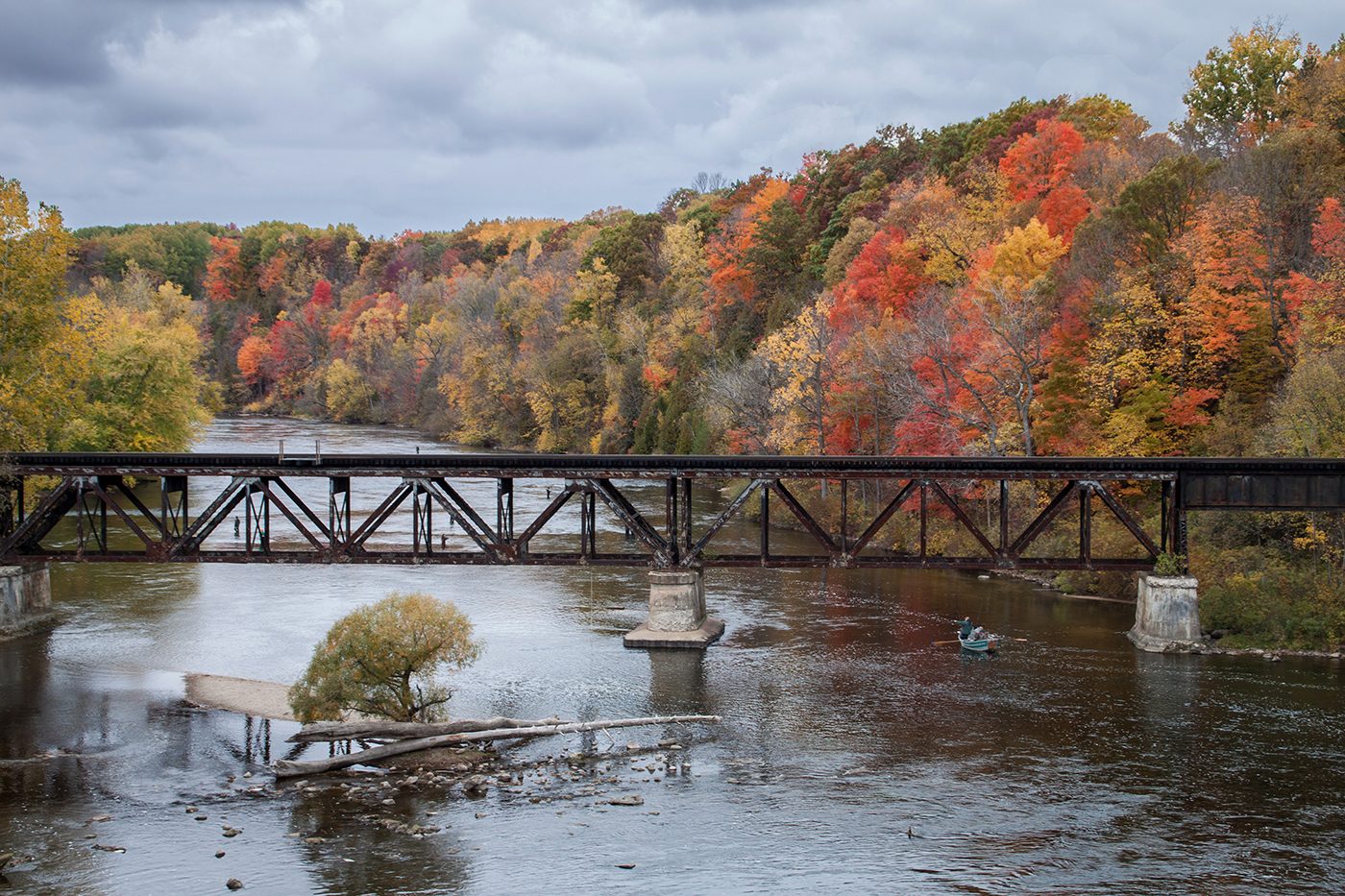By Lindsay Seventko, Communications Intern
The Muskegon River has been a favorite Great Lakes-area attraction of avid anglers and wildlife fans alike for centuries. Winding through Manistee National Forest to empty into Muskegon Lake right before reaching Lake Michigan, the river offers miles of prime habitat for more than 100 species of fish, which thrive in its cold, swift current. Fourteen invertebrates that are either threatened or of special concern live in the waters along with five threatened or special concern reptiles, but the real draw of the Muskegon are the sturgeon. Despite being a federally designated threatened species, the cold water fish flourish in the waters of the Muskegon, where much like salmon, they travel up the river to spawn. Some of America’s largest giants have been caught in the waters, including a 75-inch sturgeon and a 23-pound salmon.
While the downriver waters get most of the attention from the trophy sturgeon, salmon, northern pike and walleye, none of the incredible catches would be possible without a healthy upstream ecosystem to provide ideal spawning habitat. Here, woody debris and riparian forests offer shade and shelter, and the roots of the streambank trees minimize erosion, all providing ideal spawning conditions.
Therefore, when the emerald ash borer made its way to the riparian habitat in Manistee National Forest, the small insect threatened the health of the entire river ecosystem. The emerald ash borer does its devastating work as a miniscule larvae, eating its way into the tree trunk in order to stay warm in the winter and emerging as an adult in the spring ready to reproduce. Affected trees may die within a two-year cycle, threatening not only ash trees but also the 43 insects that rely on them and the birds, especially woodpeckers, which rely need them in the food chain.
Simultaneously with the emerald ash borer attack, oak decline struck the forest. Oak decline is the process by which outside stressors, like drought, weaken the trees, allowing invasive species that can’t affect healthy trees to inflict damage and ultimately kill the oaks.
As the upstream forest ecosystem began to deteriorate and threaten the health of the entire riparian and aquatic habitat, American Forests partnered with the U.S. Forest Service and the Great Lakes Restoration Initiative in order to replant areas destroyed by the emerald ash borer and oak decline and to prevent future destruction.
To accomplish this, 6,500 native conifer seedlings were planted along the banks of important cold water tributaries to the Muskegon River. The streams provide the cold downstream current and ideal spawning conditions for the sturgeon, salmon and northern pike. Replanting these areas helps ensure the health of the entire forest and river ecosystem and will help prevent future deterioration. By planting a diversity of species, like northern white cedar, eastern hemlock and eastern white pine, the forest will no longer have a single species accounting for more than 25 percent of the forest and will be better able to handle invasive threats.
As the trees grow over time into a diverse, mature forest, the roots will minimize erosion and ensure that the Muskegon River runs with clear, cold and plentiful water, while the branches of the trees provide shelter and shade for ideal spawning habitat. Downriver, recreationalists and anglers will be able to enjoy the river and the massive fish within its waters for years to come.
